
Components, specifications, and manufacturing process steps for a McDonalds self order kiosk
| Component | Specifications | Manufacturing Process Steps |
|---|---|---|
| Touchscreen Display | 32” - 43” HD/4K, Capacitive Touch | 1. Procure high-resolution display panels |
| Processor/Controller | Intel i5/i7 or AMD equivalent | 2. Install processor and integrate with other hardware |
| Payment System | Supports card, NFC, mobile payments, secure encryption | 3. Attach secure payment systems (card readers, NFC modules) |
| Enclosure/Body | Powder-coated steel or aluminum, vandal-resistant | 4. Fabricate and assemble the sturdy, durable kiosk enclosure |
| Printer | High-speed thermal printer for receipts | 5. Install thermal receipt printer and configure settings |
| Software | Customizable, integrates with POS, supports multiple languages | 6. Install and configure custom software and test integration |
| Operating System | Windows 10 or Linux-based | 7. Install operating system and ensure software compatibility |
| Camera (Optional) | HD for facial recognition or security | 8. Integrate optional camera module for advanced functions |
| Audio System | Speakers, microphone for accessibility | 9. Install audio components for accessibility features |
| Thermal Management | Cooling fans or passive cooling systems | 10. Test thermal systems to ensure efficient operation |
The McDonald's self-order kiosk is an advanced interactive digital system designed to streamline the ordering process in McDonald's restaurants. This kiosk allows customers to browse the menu, customize their orders, and pay directly without needing to interact with a cashier. Key features include a high-resolution touchscreen for easy navigation, integration with McDonald's POS systems for accurate order processing, and multiple payment options including card, NFC, and mobile payments. McDonalds self order kiosk enhances the dining experience by reducing wait times and improving order accuracy, while also supporting promotional displays and multilingual options. Additionally, it is designed for accessibility, ensuring all customers can use it comfortably.
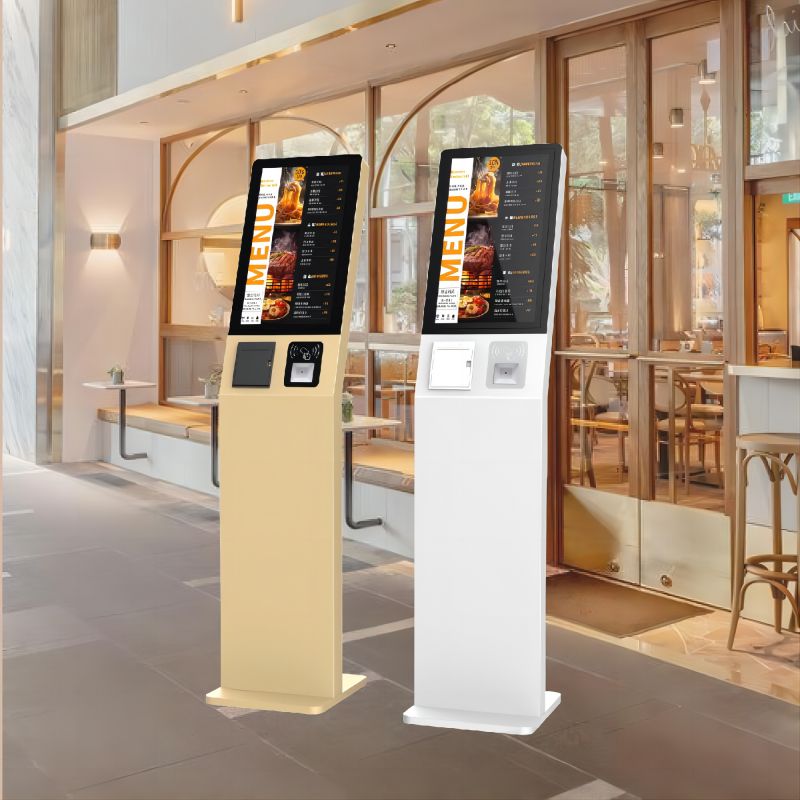
McDonald's self-ordering kiosks are constructed from various components sourced from different manufacturers, resulting in distinct systems used in their restaurants. The kiosks are primarily supplied by two major brands: Diebold and Zivelo. Diebold is renowned for its reliable and robust kiosk systems, while Zivelo is recognized for its innovative designs. The Zivelo kiosks feature high-quality ELO touchscreens, known for their durability and precision, paired with powerful controllers from Dell or HP. This combination ensures a seamless and efficient user experience, with Zivelo’s design focusing on both functionality and aesthetics. Each manufacturer brings specific strengths to the table, enhancing the overall performance and reliability of McDonald's self-ordering kiosks.
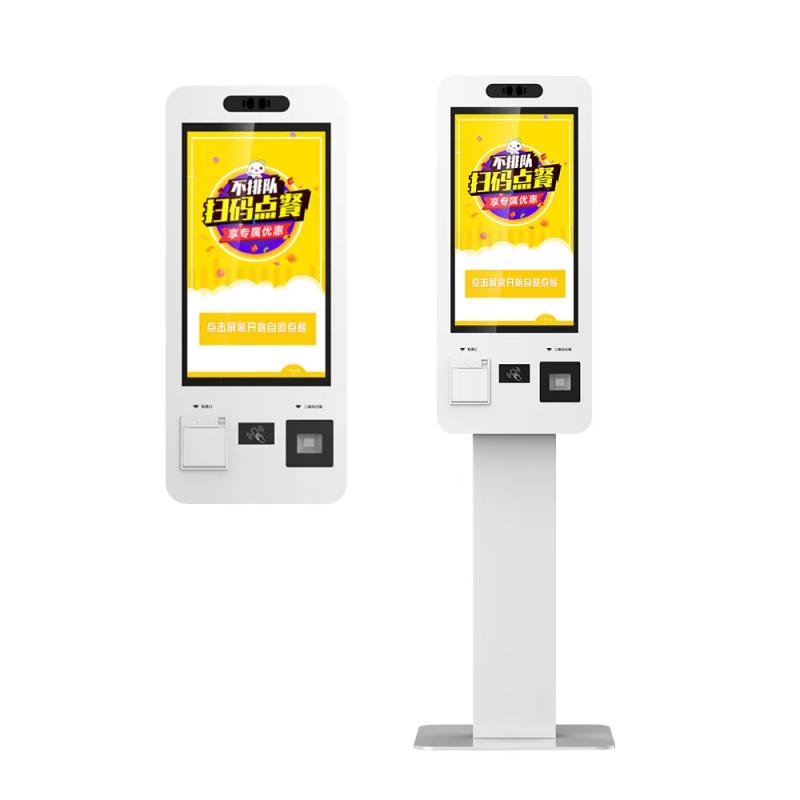
Integrating a McDonald's self-order kiosk with existing POS systems involves several key steps to ensure seamless operation and data synchronization. The McDonald's self-order kiosks are designed to work with various POS systems by employing standard integration protocols and APIs. This integration allows the kiosks to send and receive order information, manage payments, and update inventory in real-time.
The software required typically includes a robust POS integration platform that supports communication between the kiosk and the restaurant's central POS system. This software handles transaction processing, order management, and real-time updates. It must be compatible with the kiosk’s operating system and POS hardware.
Additionally, the integration process involves configuring the kiosk’s software to communicate with the POS system's backend, including setting up network connections, data synchronization schedules, and security protocols. This ensures that customer orders placed at the kiosk are accurately reflected in the POS system, and any special requests or modifications are correctly processed.
Overall, a successful integration requires collaboration between the kiosk provider and the restaurant's IT team to ensure that all components work harmoniously and that any potential issues are addressed promptly.

A McDonald's self-order kiosk operates through a series of well-coordinated steps to streamline the ordering process. Here's how it works:
User Interaction: Customers approach the kiosk and interact with a high-resolution touchscreen interface to browse the menu.
Menu Selection: Customers select their desired items from the digital menu, customizing options as needed, such as adding extras or removing ingredients.
Order Review: The kiosk displays a summary of the selected items, allowing customers to review and modify their choices before finalizing the order.
Payment Processing: Customers proceed to payment by using various methods, including credit/debit cards, NFC, or mobile payment options.
Order Confirmation: After payment, the kiosk provides an order confirmation screen with details and an estimated wait time.
Order Transmission: The order information is transmitted to the kitchen or POS system, ensuring that the staff receives and processes the order accurately.
Receipt and Pick-Up: A receipt or order number is printed or displayed on the screen, guiding customers to the pick-up area for their food.
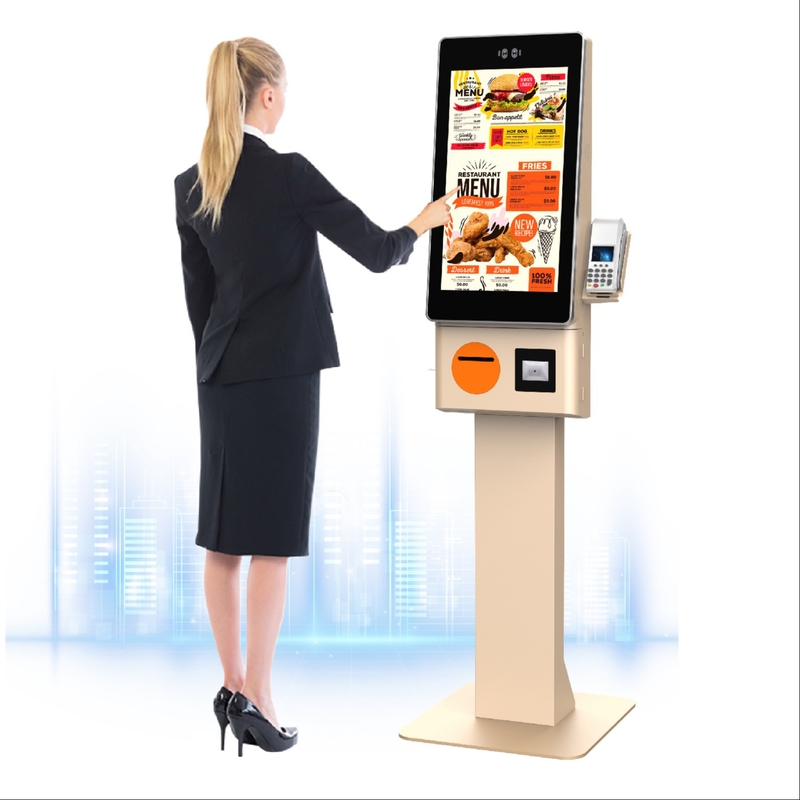
The McDonalds self order kiosk offers several key features and benefits that enhance the customer experience and streamline restaurant operations:
User-Friendly Interface: The kiosk features a high-resolution touchscreen that is intuitive and easy to navigate, allowing customers to browse and select menu items with minimal effort.
Customizable Orders: Customers can personalize their meals by adding extras, removing ingredients, or choosing specific preparation preferences, ensuring a tailored dining experience.
Multiple Payment Options: The kiosk supports various payment methods, including credit/debit cards, NFC, and mobile payments, accommodating diverse customer preferences.
Order Accuracy: By allowing customers to input their orders directly, the kiosk reduces the likelihood of errors compared to verbal orders, improving accuracy and satisfaction.
Reduced Wait Times: The kiosk speeds up the ordering process by enabling customers to place their orders quickly and efficiently, reducing overall wait times.
Promotional Integration: The kiosk can display special offers, discounts, and upsell suggestions, helping to drive sales and enhance customer engagement.
Accessibility Features: The kiosk includes features such as adjustable text sizes and multilingual support, ensuring it is accessible to a wide range of users, including those with disabilities.
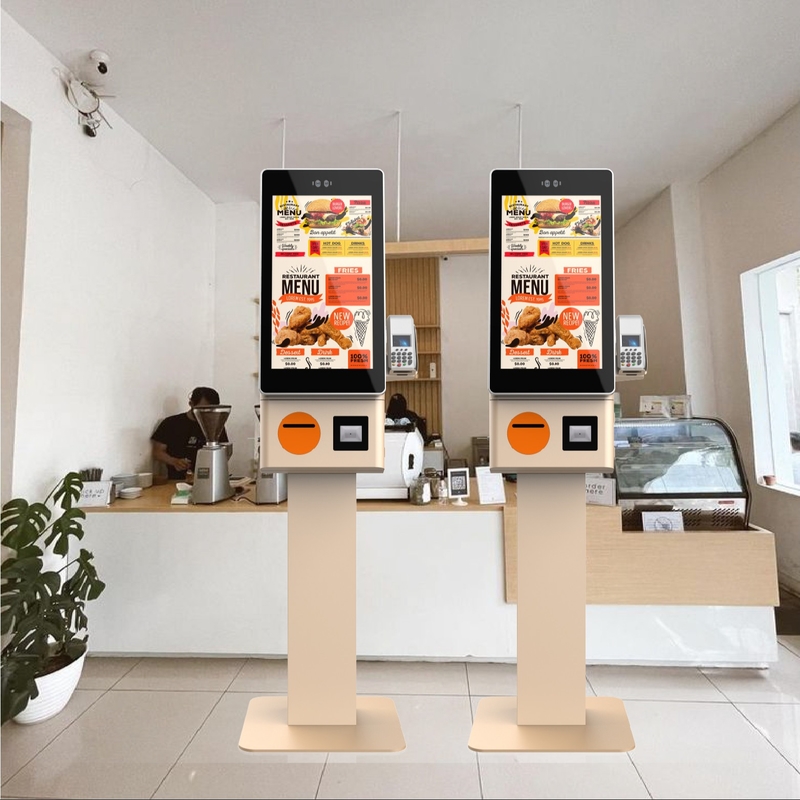
Exterior Finishes: Customizable materials, colors, and finishes.
Size and Screen Dimensions: Adjusted to fit space and usage needs.
Branding Elements: Incorporate logos and promotional content.
Menu Configuration: Reflect regional offerings and promotions.
Payment Integration: Support various payment methods including mobile and contactless options.
Multilingual Support: Multiple language options for diverse customers.
Accessibility Features: Include voice commands and text enlargement.
Loyalty Program Integration: Connects with McDonald's loyalty programs.
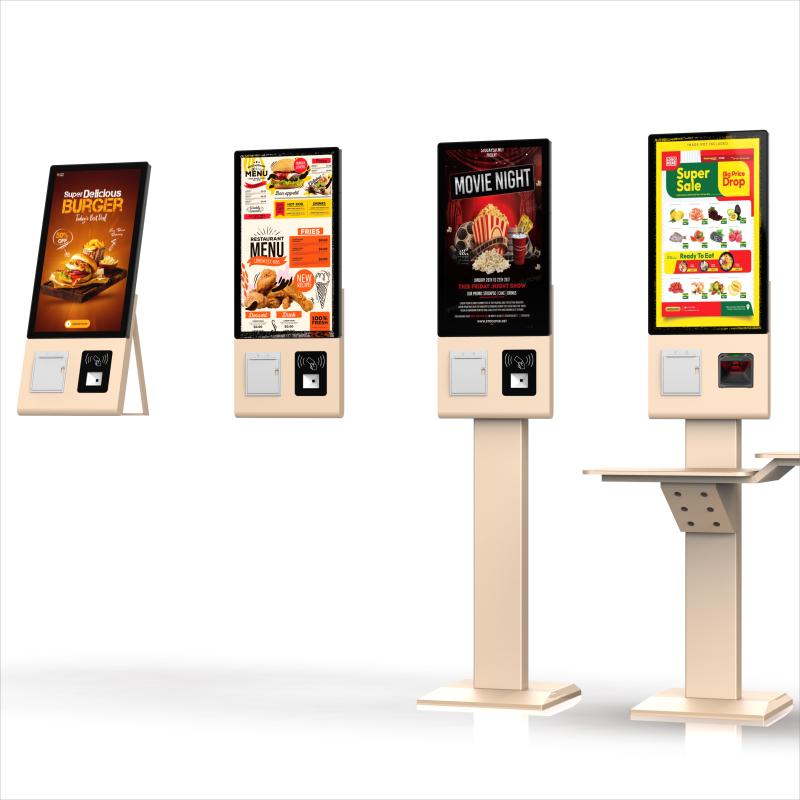
The price range for McDonald's self-order kiosks can vary widely based on several factors, including size, features, and customization. Generally, you should budget between $5,000 to $15,000 per unit.
Base Unit: The core kiosk typically starts around $5,000.
Customization: Features such as branded designs, special finishes, and custom sizes can add $1,000 to $3,000.
Software Integration: Costs for integrating with existing POS systems and adding features like multilingual support or loyalty programs may range from $1,000 to $2,500.
Payment Systems: Adding advanced payment options, including NFC and mobile payments, can increase costs by $500 to $1,500.
Installation and Training: Budget an additional $1,000 to $2,000 for professional installation and staff training.
Overall, planning for these variables will help ensure you have a comprehensive budget to cover both initial setup and long-term maintenance.
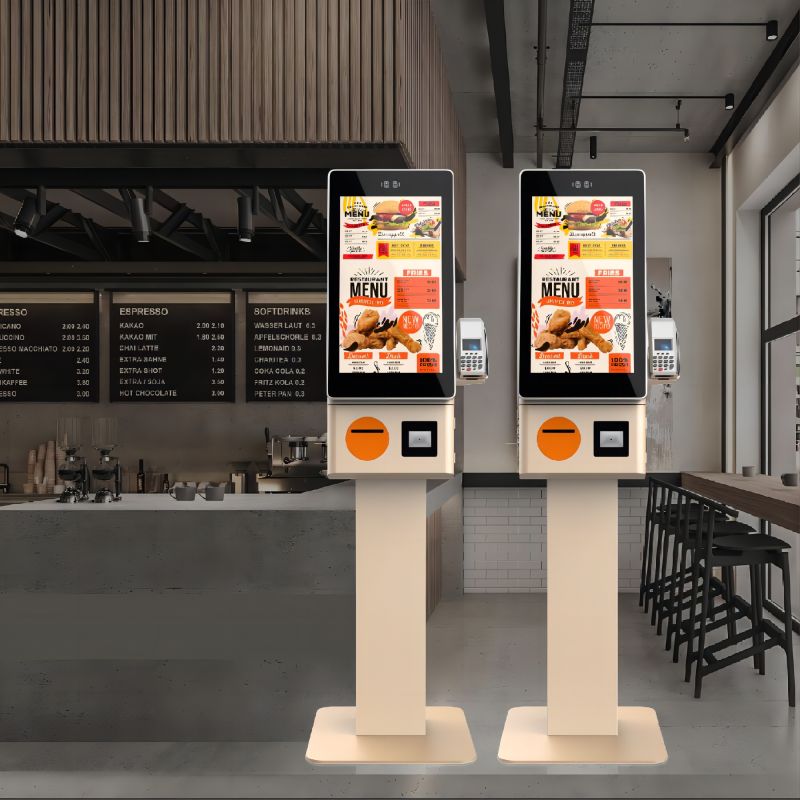
Installing and configuring a McDonald’s self-order kiosk involves several steps and typically takes about 1 to 2 days, depending on the complexity.
Site Preparation: Ensure the installation site meets electrical and network requirements.
Delivery and Unboxing: Receive the kiosk, carefully unbox it, and inspect for any damage.
Physical Installation: Securely position the kiosk, mount it if necessary, and connect to power.
Network Configuration: Connect the kiosk to the restaurant’s network, ensuring proper communication with POS systems.
Software Setup: Install and configure the software, including menu integration, customization options, and payment systems.
Testing: Conduct thorough testing to ensure all functions work correctly, including touchscreens, printers, and payment processing.
Staff Training: Train employees on how to use and troubleshoot the kiosk.
Initial Setup: 4-6 hours for physical setup and network connections.
Software Configuration: 4-8 hours depending on complexity and customization.
Testing and Training: 2-4 hours.
Overall, expect the process to be completed within a single working day if all components and configurations are standard.
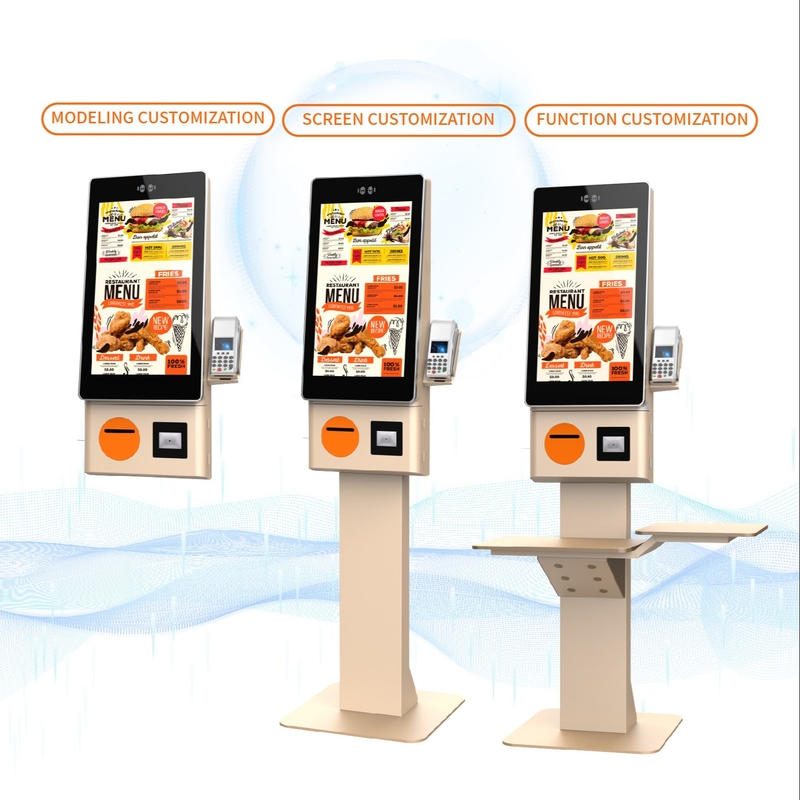
Maintaining McDonald’s self-order kiosks is crucial for ensuring their longevity and optimal performance. Regular maintenance and after-sales support options are vital for addressing potential issues and keeping the kiosks operational.
Regular Cleaning: Clean screens and components daily to prevent dirt and grime buildup, ensuring clear touch responses and hygiene.
Software Updates: Keep software up to date with the latest patches and versions to ensure security and functionality.
Hardware Checks: Regularly inspect hardware components such as printers and card readers for wear and tear, replacing parts as needed.
Network Monitoring: Ensure stable and secure network connections, addressing any connectivity issues promptly.
Technical Support: 24/7 technical support for troubleshooting and resolving issues remotely.
Warranty Services: Comprehensive warranty coverage for parts and labor, with specific terms outlined in the purchase agreement.
On-Site Repairs: On-site service options for major repairs or replacements, minimizing downtime.
Training: Ongoing training for staff to handle common issues and maintenance tasks effectively.

Functional Requirements: Determine essential features like screen size, payment options, and menu customization. Ensure the kiosk meets your operational needs and enhances customer experience.
Integration with Existing Systems: Verify compatibility with your current POS system and other technology. Smooth integration ensures operational efficiency and data consistency.
Customization Options: Explore available customization options such as branding, interface design, and menu configurations. Tailoring the kiosk to your brand can improve user satisfaction.
Cost and Payment Terms: Review the total cost, including installation, training, and additional fees. Understand payment terms and ensure they fit within your budget.
Warranty and Support: Check the warranty and after-sales support provided. Reliable maintenance, repair services, and software updates are crucial for minimizing downtime.
Lead Time for Delivery and Installation: Confirm delivery and installation timelines. Align these with your project schedule to avoid operational delays and ensure timely implementation.
Energy Efficiency and Space Requirements: Assess the kiosk's energy consumption and space needs. Choose a model that is energy-efficient and fits within your available space to optimize operational costs and space utilization.
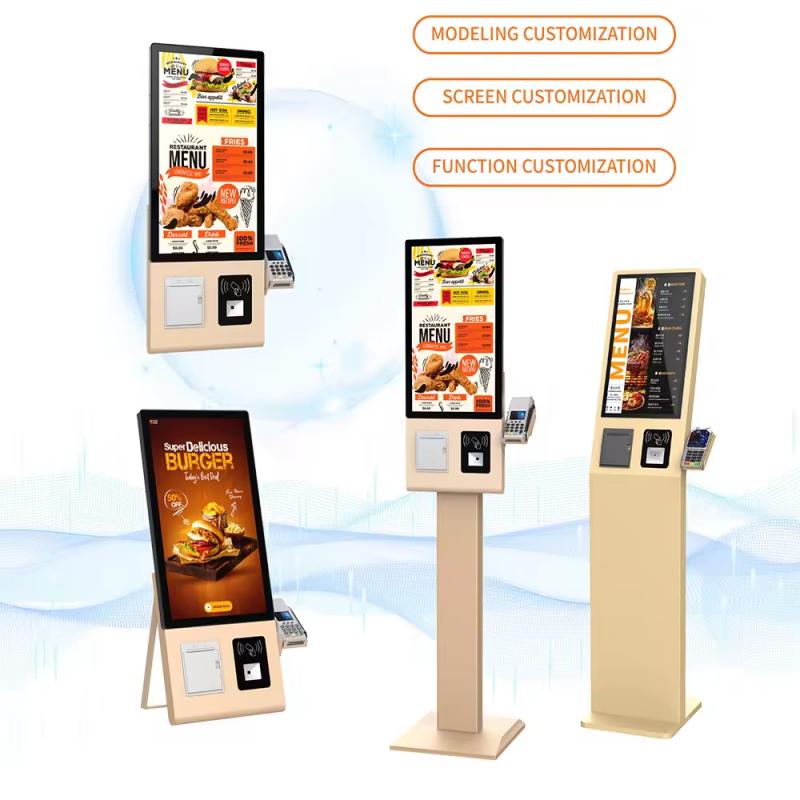
| Type | Sizes | Style | Design Features | Price Range |
|---|---|---|---|---|
| Standard Kiosk | 15-22 inches | Freestanding | Touchscreen, card reader, printer | $5,000 - $8,000 |
| Compact Kiosk | 15-17 inches | Countertop | Touchscreen, compact design | $4,000 - $6,000 |
| Outdoor Kiosk | 22-32 inches | Weatherproof, freestanding | Touchscreen, weather-resistant, secure payment options | $8,000 - $12,000 |
| Interactive Kiosk | 17-22 inches | Freestanding | Touchscreen, interactive menu, multimedia options | $6,000 - $10,000 |
| High-End Kiosk | 22-27 inches | Premium, freestanding | Advanced touch technology, integrated payment solutions, branding options | $10,000 - $15,000 |
| Dual-Screen Kiosk | 22-32 inches | Freestanding | Main touchscreen for ordering, secondary screen for promotions | $12,000 - $18,000 |
| Custom Kiosk | Custom sizes available | Customizable | Custom design, branding, specialized features | Varies widely, typically $8,000 - $20,000+ |
When purchasing a McDonald's self-order kiosk, follow these steps to ensure a smooth process:
Define Requirements: Identify your specific needs, including the number of kiosks, screen sizes, and additional features like custom branding or payment systems. This helps narrow down options.
Research Suppliers: Investigate different kiosk manufacturers and suppliers. Look for those with proven experience in providing McDonald’s self-order kiosks and check customer reviews and industry reputation.
Request Quotes: Contact suppliers to get detailed quotes. Ensure these quotes cover the full scope of your requirements, including hardware, software, installation, and any customization.
Evaluate Proposals: Compare proposals based on price, features, warranty, and after-sales support. Assess the value offered by each supplier to ensure it meets your operational needs.
Finalize Purchase: Choose the supplier that best fits your requirements and budget. Confirm the details of the purchase, including payment terms, delivery schedules, and installation services.
Installation and Training: Coordinate with the supplier for the installation of the kiosks. Ensure that your staff receives adequate training on how to operate and troubleshoot the kiosks.
Ongoing Support: Establish a plan for ongoing support and maintenance. Verify the supplier’s policies on service agreements, repairs, and software updates to ensure continuous operation.
Considerations: Pay attention to factors such as software integration with existing POS systems, warranty coverage, service quality, and potential for future upgrades. Ensuring these aspects are well-managed will help maximize the benefits of your self-order kiosks.
What did our happy clients say?
Absolutely thrilled with our McDonalds self order kiosk! The quality is top-notch and the customization options are perfect. Lean Kiosk Systems provided outstanding service and support throughout the process. Highly recommend!
Our new McDonald's self order kiosk is a game-changer! Excellent build quality and seamless integration with our systems. Lean Kiosk Systems delivered beyond expectations, with exceptional customer service.
Very satisfied with the McDonalds self order kiosk we purchased. The kiosk operates flawlessly, and Lean Kiosk Systems offered superb support. The quality of the product and service is truly impressive!
The McDonald's self order kiosk we bought exceeded our expectations. Fantastic quality and smooth functionality. Kudos to Lean Kiosk Systems for their professional service and attentive support. Worth every penny!